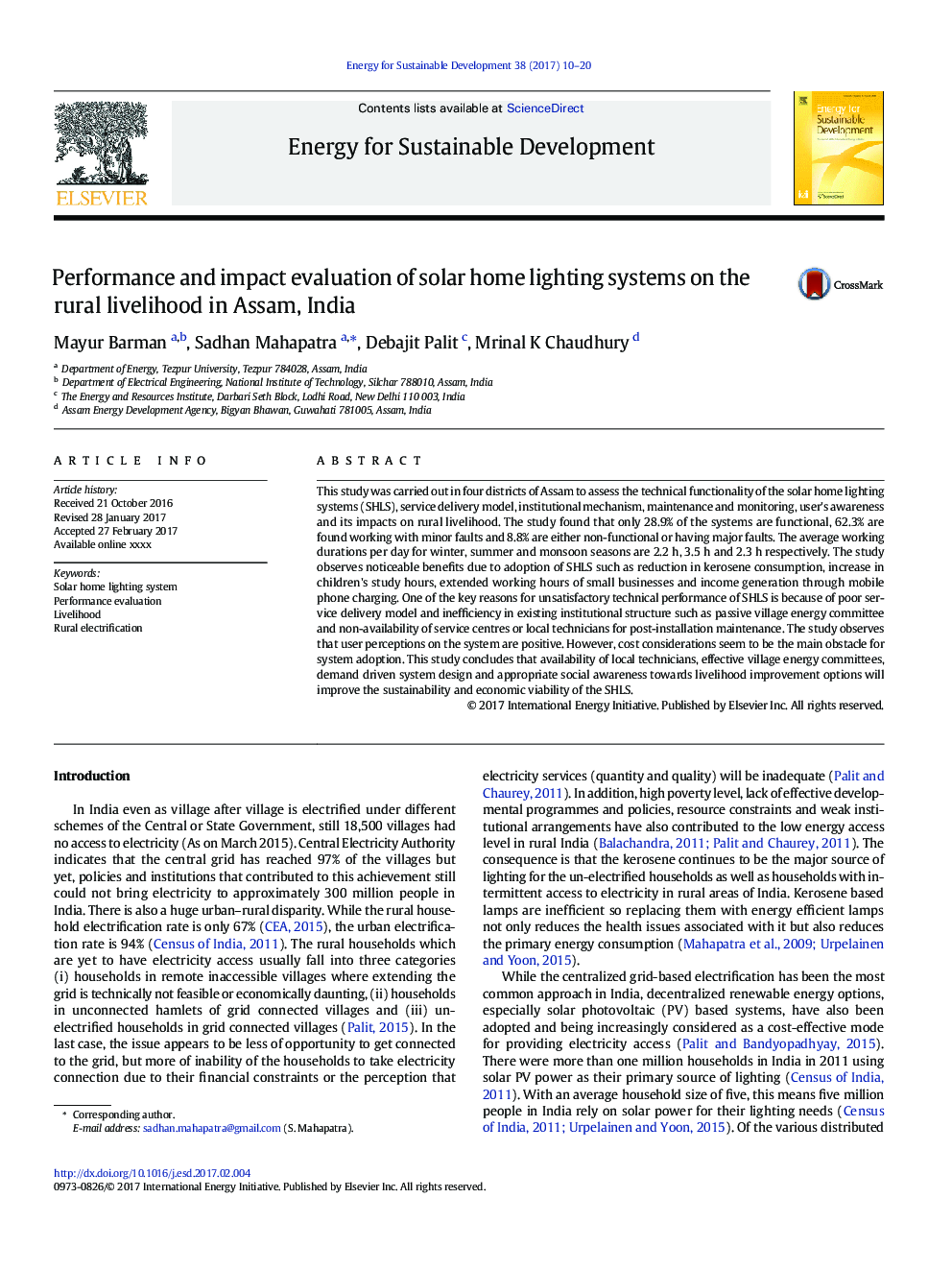| Article ID | Journal | Published Year | Pages | File Type |
|---|---|---|---|---|
| 5114366 | Energy for Sustainable Development | 2017 | 11 Pages |
Abstract
This study was carried out in four districts of Assam to assess the technical functionality of the solar home lighting systems (SHLS), service delivery model, institutional mechanism, maintenance and monitoring, user's awareness and its impacts on rural livelihood. The study found that only 28.9% of the systems are functional, 62.3% are found working with minor faults and 8.8% are either non-functional or having major faults. The average working durations per day for winter, summer and monsoon seasons are 2.2Â h, 3.5Â h and 2.3Â h respectively. The study observes noticeable benefits due to adoption of SHLS such as reduction in kerosene consumption, increase in children's study hours, extended working hours of small businesses and income generation through mobile phone charging. One of the key reasons for unsatisfactory technical performance of SHLS is because of poor service delivery model and inefficiency in existing institutional structure such as passive village energy committee and non-availability of service centres or local technicians for post-installation maintenance. The study observes that user perceptions on the system are positive. However, cost considerations seem to be the main obstacle for system adoption. This study concludes that availability of local technicians, effective village energy committees, demand driven system design and appropriate social awareness towards livelihood improvement options will improve the sustainability and economic viability of the SHLS.
Related Topics
Physical Sciences and Engineering
Energy
Energy (General)
Authors
Mayur Barman, Sadhan Mahapatra, Debajit Palit, Mrinal K Chaudhury,
